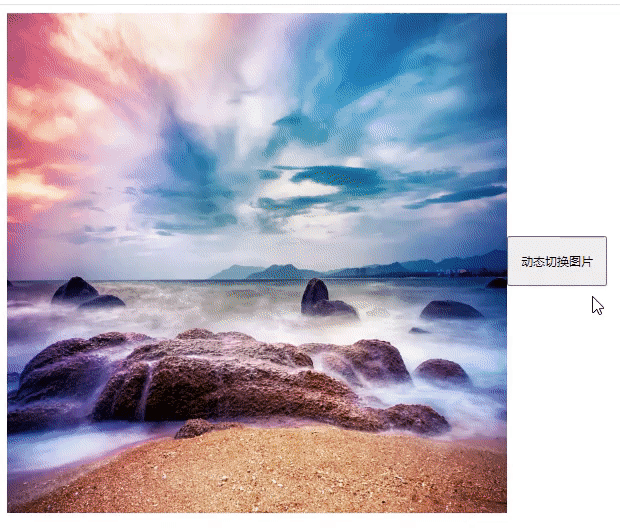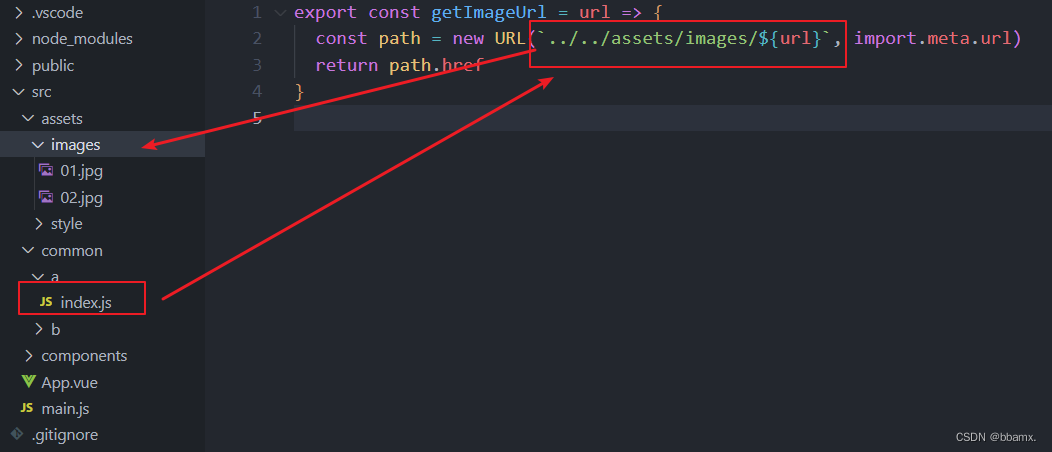目录
1、将图片放入public文件夹中
2、使用 /src/.... 路径开头
3、生成图片的完整URL地址(推荐)

1、将图片放入public文件夹中
使用图片:路径为 '/public' 开头
<template><div><img :src="`/public/${flag ? '01' : '02'}.jpg`" alt="" /><button @click="flag = !flag">动态切换图片</button></div></template><script setup> import { ref, reactive } from 'vue' const flag = ref(false) </script><style scoped> img {width: 500px;height: 500px;vertical-align: middle; } button {width: 100px;height: 50px; } </style>
2、使用 /src/.... 路径开头
图片位置位于 src 目录下
可以使用 '/src/...' 动态引入图片
<template><div><img :src="`/src/assets/images/${flag ? '01' : '02'}.jpg`" alt="" /><button @click="flag = !flag">动态切换图片</button></div> </template><script setup> import { ref, reactive } from 'vue' const flag = ref(false) </script><style scoped> img {width: 500px;height: 500px;vertical-align: middle; } button {width: 100px;height: 50px; } </style>致命问题:使用这种方式本地看起来很正常,但是部署到生产环境图片就加载不出了,因为打包后路径出现了问题
3、生成图片的完整URL地址(推荐)
图片位置位于 src 目录下
通过手写 getImageUrl函数 动态生成图片URL地址
<template><div><img :src="getImageUrl(flag ? '01.jpg' : '02.jpg')" alt="" /><button @click="flag = !flag">动态切换图片</button></div> </template><script setup> import { ref, reactive } from 'vue' const flag = ref(false)function getImageUrl(url) {const path = new URL(`./assets/images/${url}`, import.meta.url)return path.href } </script><style scoped> img {width: 500px;height: 500px;vertical-align: middle; } button {width: 100px;height: 50px; } </style>注意:getImageUrl函数中使用的地址是相对位置的地址
该函数位于 App.vue 文件中 所以 getImageUrl函数 中的地址是 ./assets/....
当该函数所处的文件地址变化时,找图片的地址也要相对发生变化
解释一下getImageUrl函数中代码的作用和意思
作用:
这个函数是用来获取图片的 URL 地址的。它接受一个参数
url,然后使用new URL()构造函数创建一个新的 URL 对象,其中包含了./assets/images/目录下的图片路径。在这个路径中,url参数用于指定具体的图片文件名或路径。最后,通过path.href返回完整的 URL 地址。意思:
1、new URL()构造函数创建了一个新的 URL 对象。2、这个 URL 对象的第一个参数是一个字符串,表示相对路径
./assets/images/,这里假设这是图片文件存放的目录。3、第二个参数
import.meta.url是 Node.js 中的一个特殊变量,它指向当前模块文件的 URL 地址。4、函数将传入的
url参数附加到./assets/images/路径后面,得到了完整的图片路径。5、最后,通过
path.href返回这个完整的图片 URL 地址。









- Jenkins配置邮箱接收构建通知)
)
示例代码)













